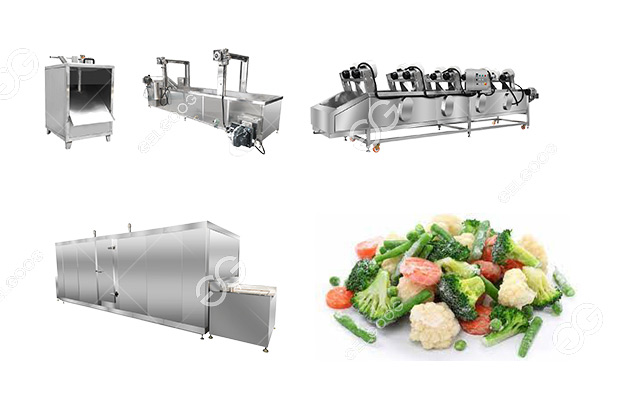Frozen vegetables are a staple in many households due to their convenience and nutritional value. But have you ever wondered how these vibrant, flavorful vegetables end up in the freezer? In this blog, we’ll take you through the fascinating process of making frozen vegetables from farm to freezer. Let’s dig deeper!
The method of processing frozen vegetables requires a frozen vegetable production line, which is then completed through processing steps such as harvesting, cleaning, sorting, blanching, freezing, packaging and storage.

reward:
The journey of frozen vegetables begins on the farm. Farmers carefully grow vegetables such as peas, carrots, corn, broccoli and spinach to ensure they are grown for optimum freshness and nutritional value. The vegetables are harvested when they are fully ripe but still retain their crispness and vibrant color.
Washing and Sorting:
After harvesting, the vegetables are transported to processing facilities. Here, they go through a thorough cleaning process to remove any dirt, debris or impurities. After washing, vegetables are sorted by size, quality and type to ensure consistency in the final frozen product.
Blanch:
Blanching is a critical step in the production process of frozen vegetables. Blanch vegetables by briefly submerging them in boiling water or steam. Blanching serves multiple purposes: it helps preserve the natural color, texture, and flavor of vegetables, and it also helps destroy enzymes that cause quality loss during freezing and storage.
freezing:
After blanching, the vegetables are cooled quickly through a process called flash freezing. Flash freezing involves exposing vegetables to extremely low temperatures using specialized freezing equipment. This quick freezing process helps preserve the vegetable’s cellular structure and prevents the formation of large ice crystals that can compromise the texture and overall quality of the vegetable.
Package:
Once the vegetables are frozen, they are ready for packaging. They are carefully weighed and dispensed into appropriate packaging materials such as plastic bags or containers. Packaging is essential to preserve freshness and prevent frostbite. Many frozen vegetable packages include resealable options, allowing consumers to use only what they need while keeping the rest frozen.
Storage and Distribution:
Packaged frozen vegetables are stored in a temperature-controlled refrigerator to preserve their quality and nutritional value. From there, they are distributed to grocery stores, supermarkets and other retail outlets. Frozen vegetables must be kept at the proper temperature during distribution to prevent thawing and spoilage.
Consumers are prepared to:
It’s finally time to enjoy frozen vegetables! When you’re ready to use them, just follow the directions on the package. Most frozen vegetables can be cooked right from the frozen state, which makes them very convenient when preparing meals. Whether you choose to steam, sauté, roast or add them to your favorite recipes, frozen vegetables provide a quick and nutritious addition to any meal.
in conclusion:
The production process of frozen vegetables includes careful growing, harvesting, cleaning, blanching, quick freezing, packaging and distribution. Every step is critical to maintaining the freshness, flavor and nutritional value of vegetables. By understanding the farm-to-freezer journey, we can appreciate the convenience and benefits that frozen vegetables bring to our plates. So next time you reach for a bag of frozen peas or mixed greens, remember the meticulous process of getting them to the table.
If you are interested in vegetable processing, you can contact us at any time, we will provide you with a complete frozen vegetable processing solution.
